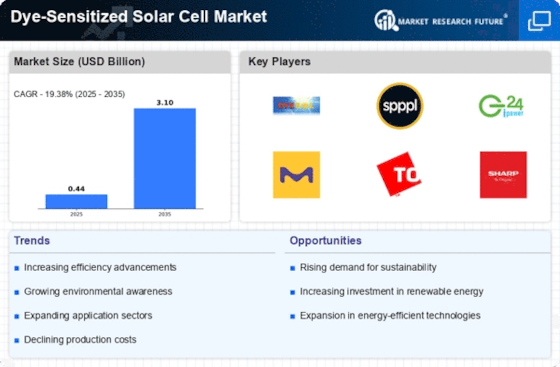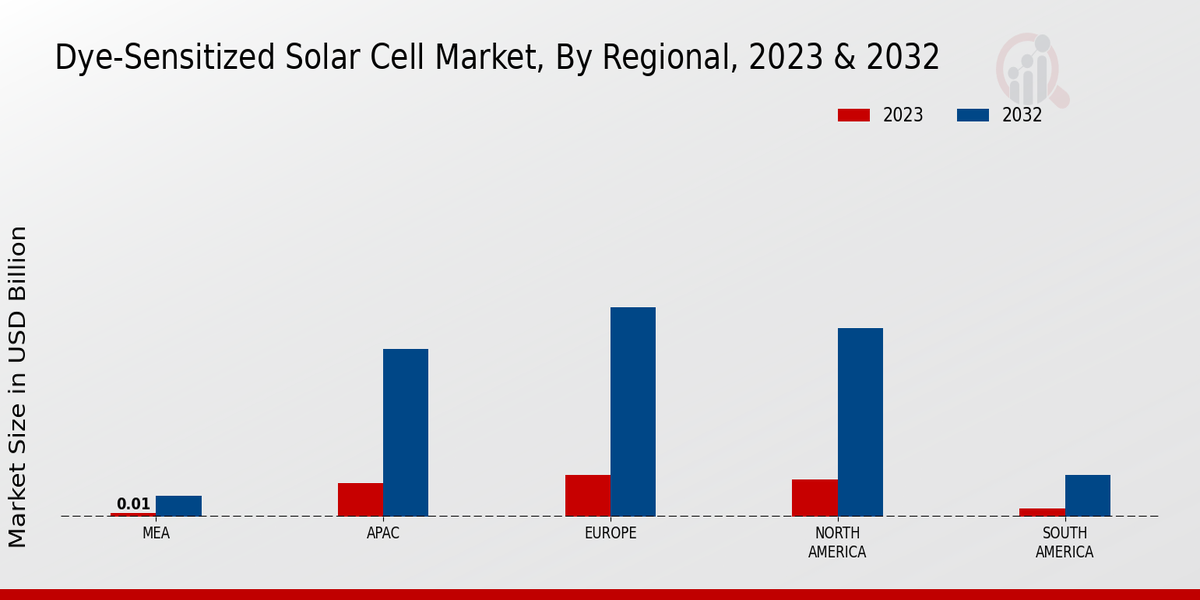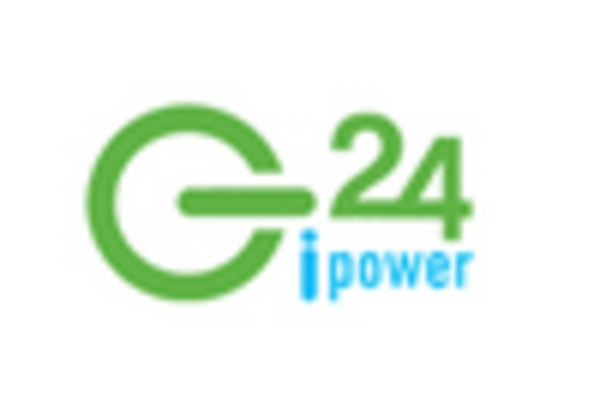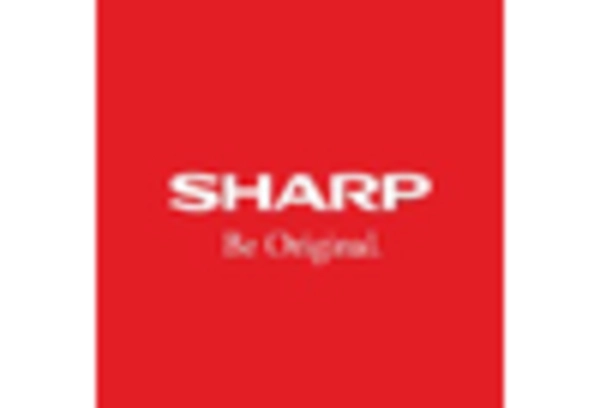Rising Energy Demand
The Dye-Sensitized Solar Cell Market is poised for growth due to the rising global energy demand. As populations increase and economies develop, the need for sustainable energy solutions becomes more pressing. Dye-sensitized solar cells offer a promising alternative to conventional energy sources, particularly in regions with limited access to traditional power grids. Market forecasts suggest that the demand for renewable energy is expected to rise by over 30% in the next decade, creating a favorable environment for the adoption of dye-sensitized solar technology. This trend indicates a potential shift in energy consumption patterns, where decentralized and renewable sources play a crucial role in meeting future energy needs.
Growing Environmental Awareness
The Dye-Sensitized Solar Cell Market is benefiting from an increasing global consciousness regarding environmental sustainability. As climate change concerns escalate, consumers and businesses alike are seeking renewable energy solutions that minimize ecological footprints. Dye-sensitized solar cells, known for their low environmental impact during production and operation, align well with these values. Market data suggests that the demand for eco-friendly energy sources is projected to grow significantly, with a compound annual growth rate of over 20% in the renewable energy sector. This shift towards sustainability is likely to drive investments in dye-sensitized solar technology, as stakeholders recognize the potential for these cells to contribute to a greener future.
Government Incentives and Policies
The Dye-Sensitized Solar Cell Market is significantly influenced by supportive government policies and incentives aimed at promoting renewable energy adoption. Various countries are implementing subsidies, tax credits, and grants to encourage the development and installation of solar technologies, including dye-sensitized cells. These initiatives are designed to reduce the financial burden on consumers and businesses, making solar energy more accessible. Recent data shows that regions with robust policy frameworks have witnessed a marked increase in solar installations, with dye-sensitized solar cells being a focal point due to their cost-effectiveness. As governments continue to prioritize clean energy, the market for dye-sensitized solar cells is likely to expand.
Diverse Applications of Dye-Sensitized Solar Cells
The versatility of dye-sensitized solar cells is a key driver in the Dye-Sensitized Solar Cell Market. These cells can be integrated into a variety of applications, ranging from building-integrated photovoltaics to portable electronic devices. Their lightweight and flexible nature allows for innovative designs that traditional solar technologies cannot accommodate. For example, the integration of dye-sensitized solar cells into windows and facades is gaining traction, providing aesthetic and functional benefits. Market analysis indicates that the architectural sector is increasingly adopting these technologies, potentially expanding the market share of dye-sensitized solar cells. This adaptability not only enhances their appeal but also opens new revenue streams for manufacturers.
Technological Advancements in Dye-Sensitized Solar Cells
The Dye-Sensitized Solar Cell Market is experiencing a surge in technological advancements that enhance efficiency and reduce production costs. Innovations in materials, such as the development of new sensitizers and electrolytes, are improving the overall performance of these solar cells. For instance, recent studies indicate that the efficiency of dye-sensitized solar cells has reached levels exceeding 13%, making them more competitive with traditional photovoltaic technologies. Furthermore, advancements in manufacturing processes are streamlining production, which could potentially lower the price per watt of energy generated. This trend not only attracts investment but also encourages wider adoption across various sectors, including residential, commercial, and industrial applications.


















Leave a Comment